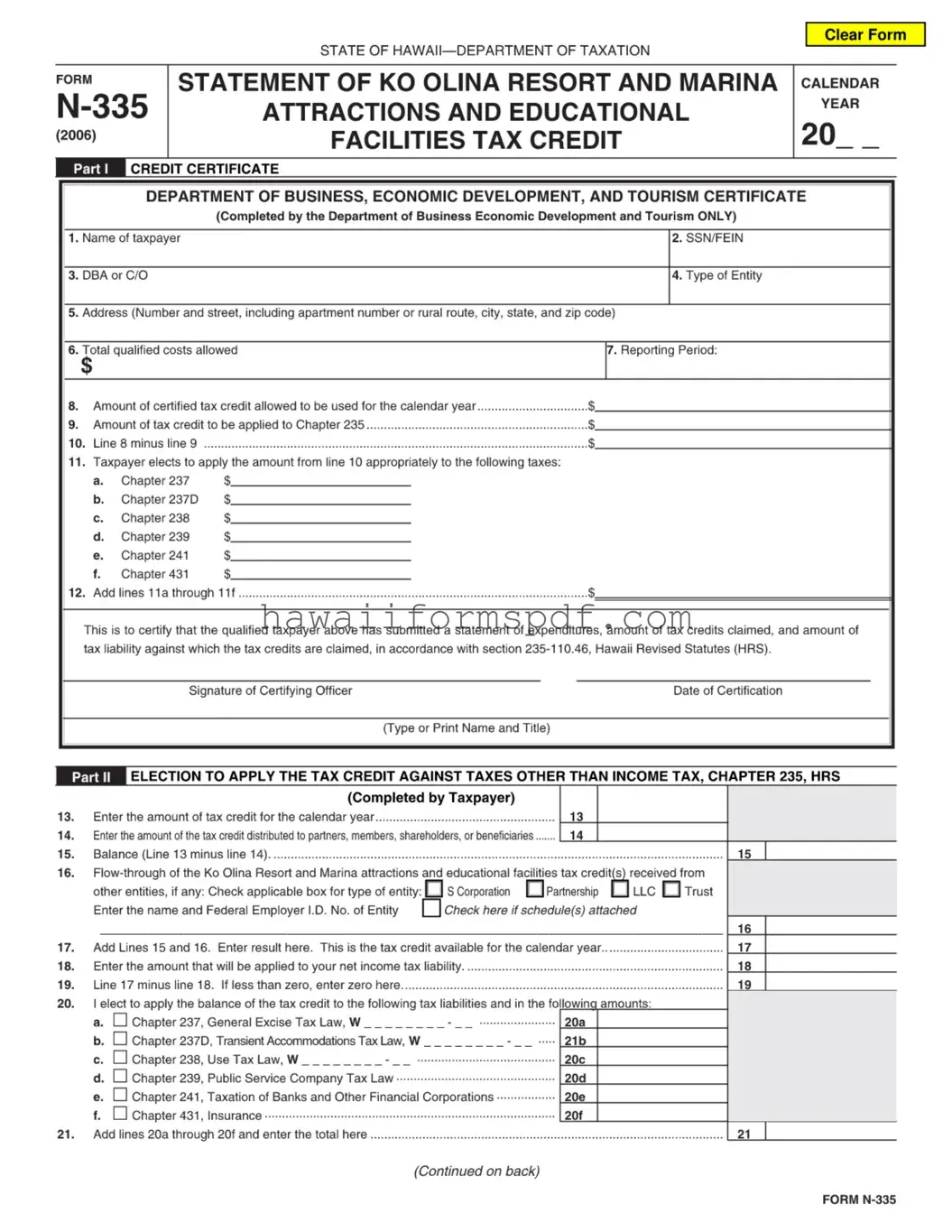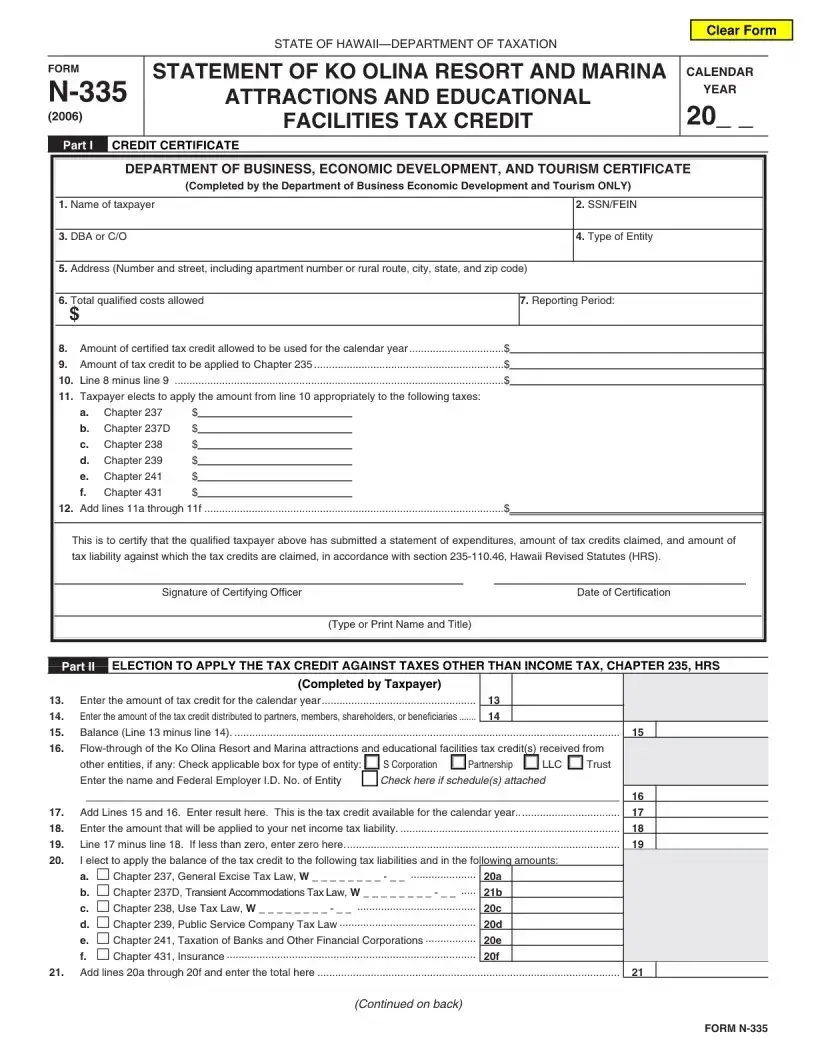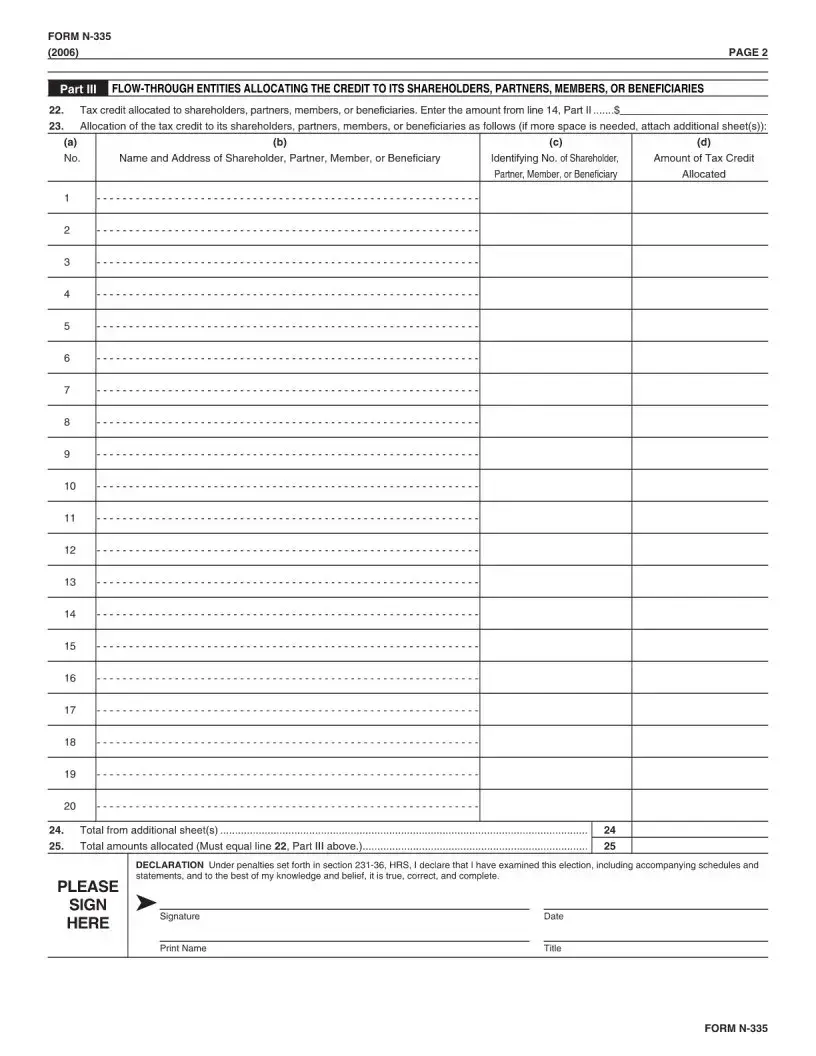Filling out the Hawaii N-335 form can be a straightforward process, but many people make mistakes that can lead to delays or complications. One common error is failing to provide complete information. Each section of the form requires specific details, such as the taxpayer's name, address, and identification numbers. Missing any of these can result in the form being rejected or returned for correction.
Another frequent mistake is not double-checking calculations. The form includes various lines where taxpayers must perform arithmetic operations, such as subtracting amounts or adding totals. An error in these calculations can lead to incorrect tax credit amounts, which can affect the overall tax filing. It's crucial to take the time to verify these numbers before submitting the form.
Some individuals overlook the importance of signatures. The declaration section requires the taxpayer's signature, and without it, the form is incomplete. This step is often forgotten, leading to unnecessary delays in processing the tax credit. Always ensure that the form is signed and dated before submission.
In addition, many people forget to attach necessary schedules or supporting documents. If additional sheets are required to provide details about allocations to partners or shareholders, these must be included. Failing to attach these documents can result in the form being deemed incomplete.
Another common issue arises from incorrect entity classification. Taxpayers must accurately indicate their type of entity, whether it’s a corporation, partnership, or LLC. Misclassifying the entity can lead to incorrect tax treatment and potential penalties.
Some filers also neglect to keep copies of their submitted forms. It’s essential to retain a copy for personal records, as this can be helpful if there are any questions or issues in the future. Without a copy, it may be challenging to reference what was submitted.
Lastly, a lack of understanding of the tax credit limits can lead to mistakes. Taxpayers should be aware of the maximum allowable credits and how they apply to their specific situation. Misunderstanding these limits can result in claiming more than is permitted, leading to further complications.


